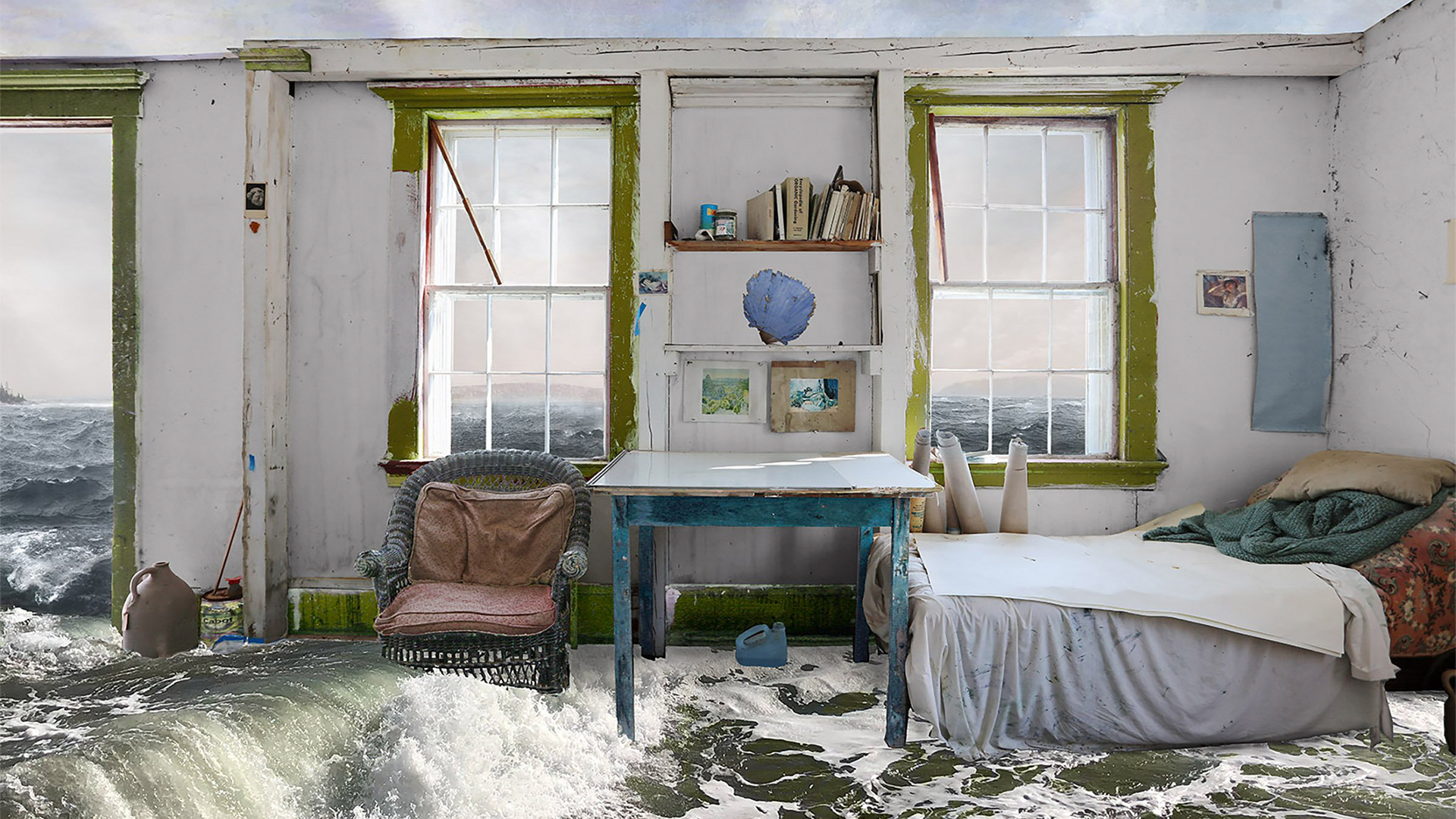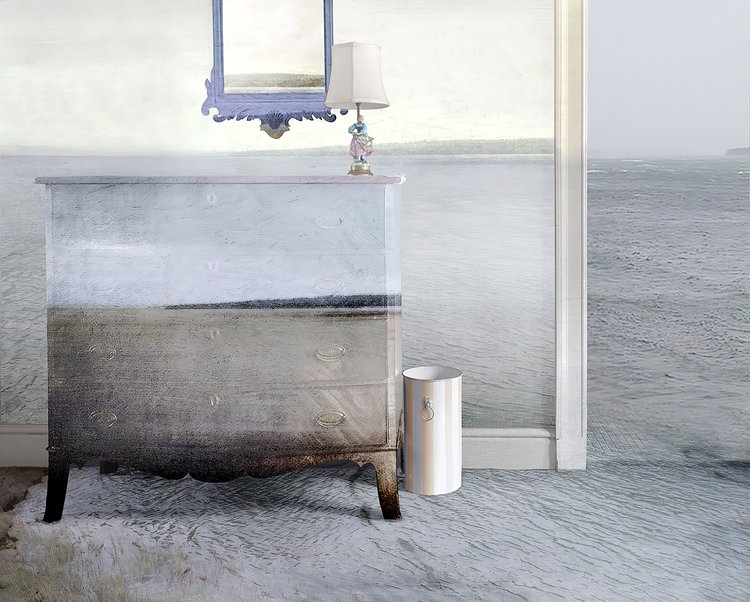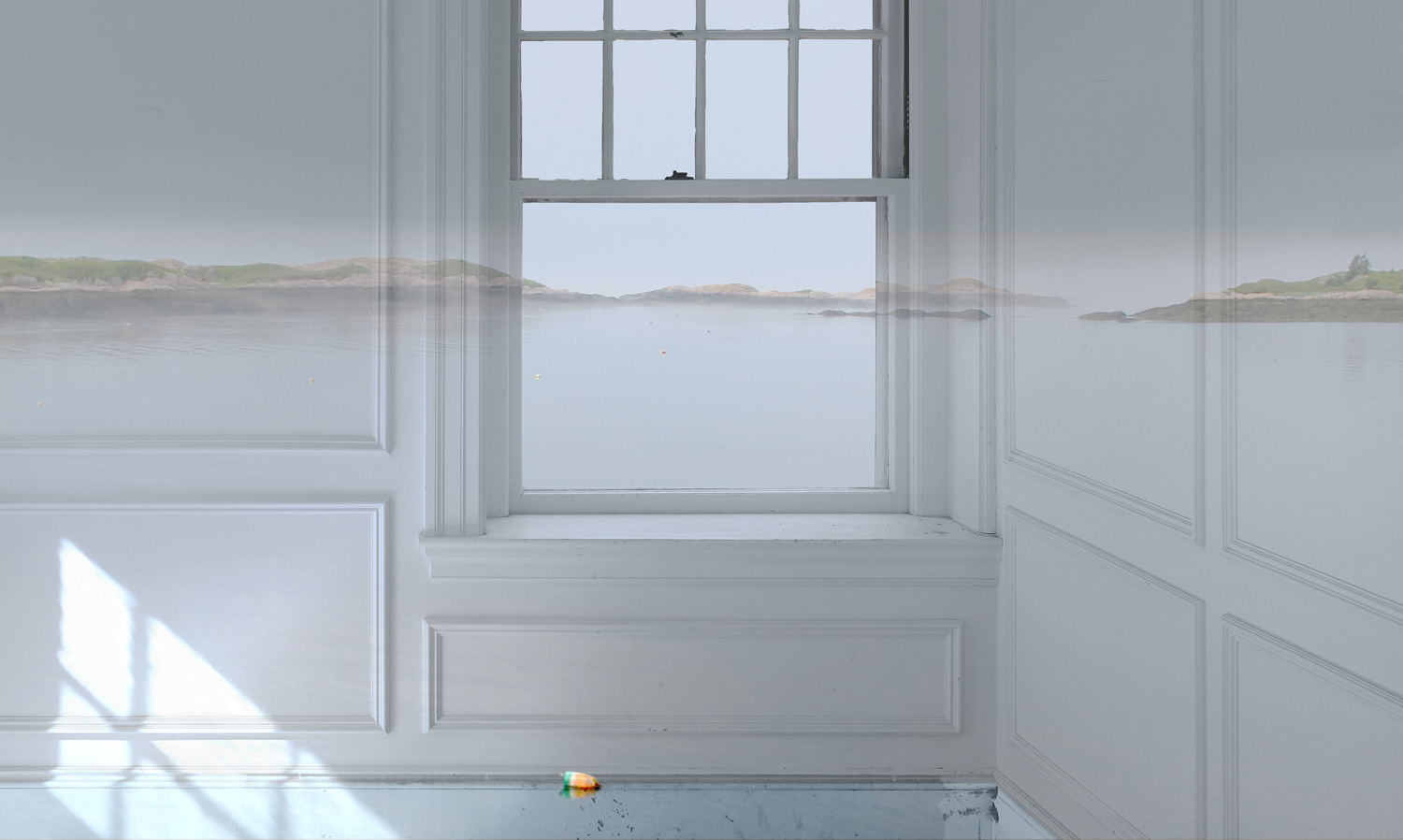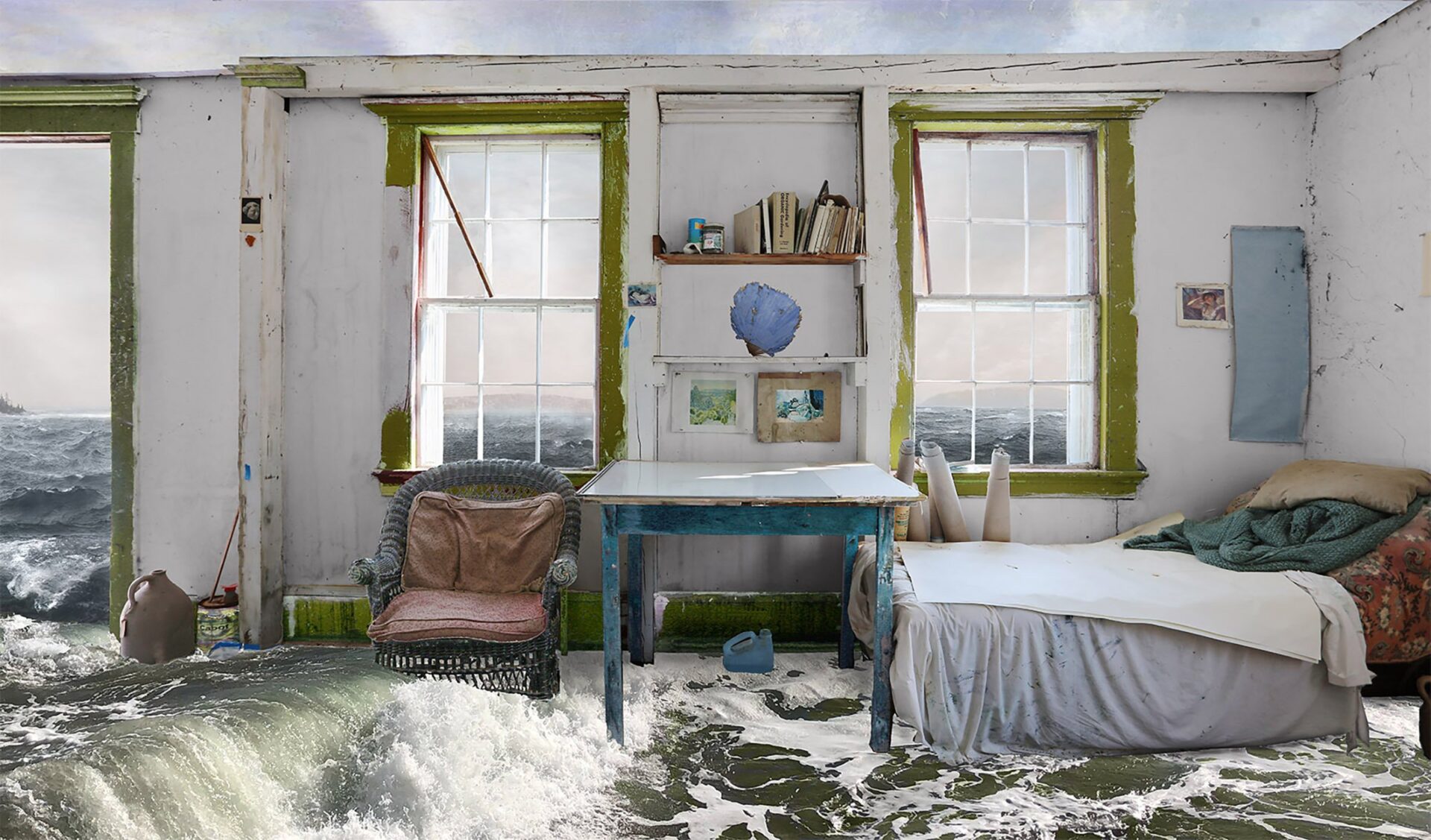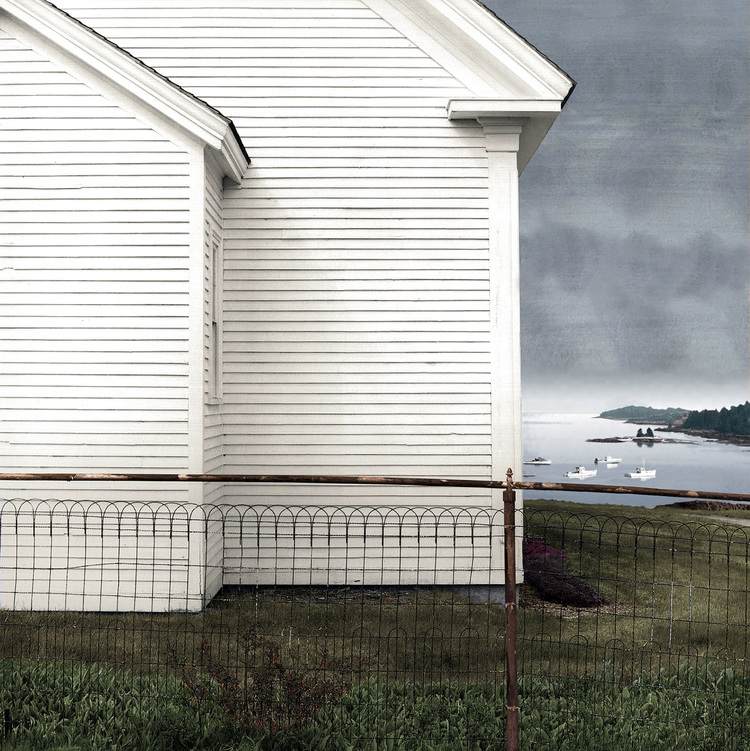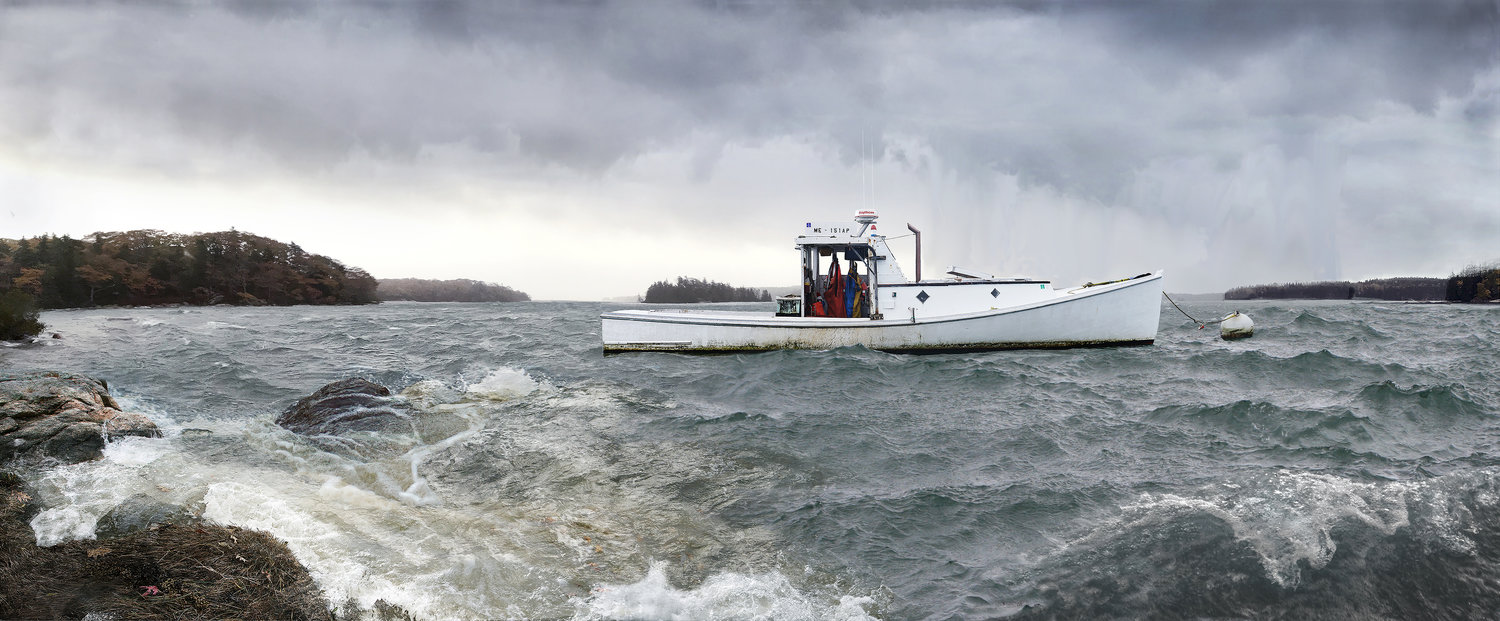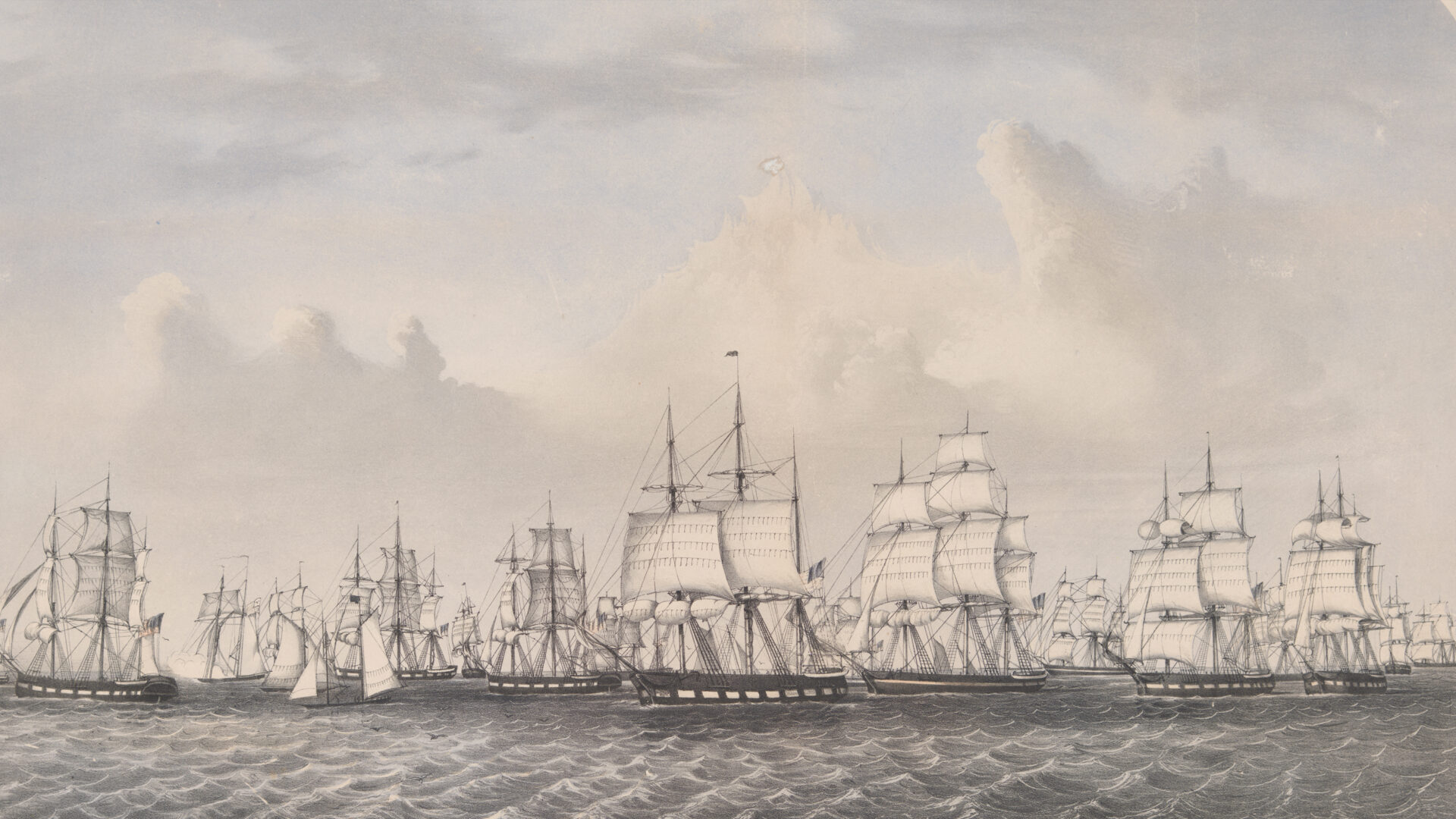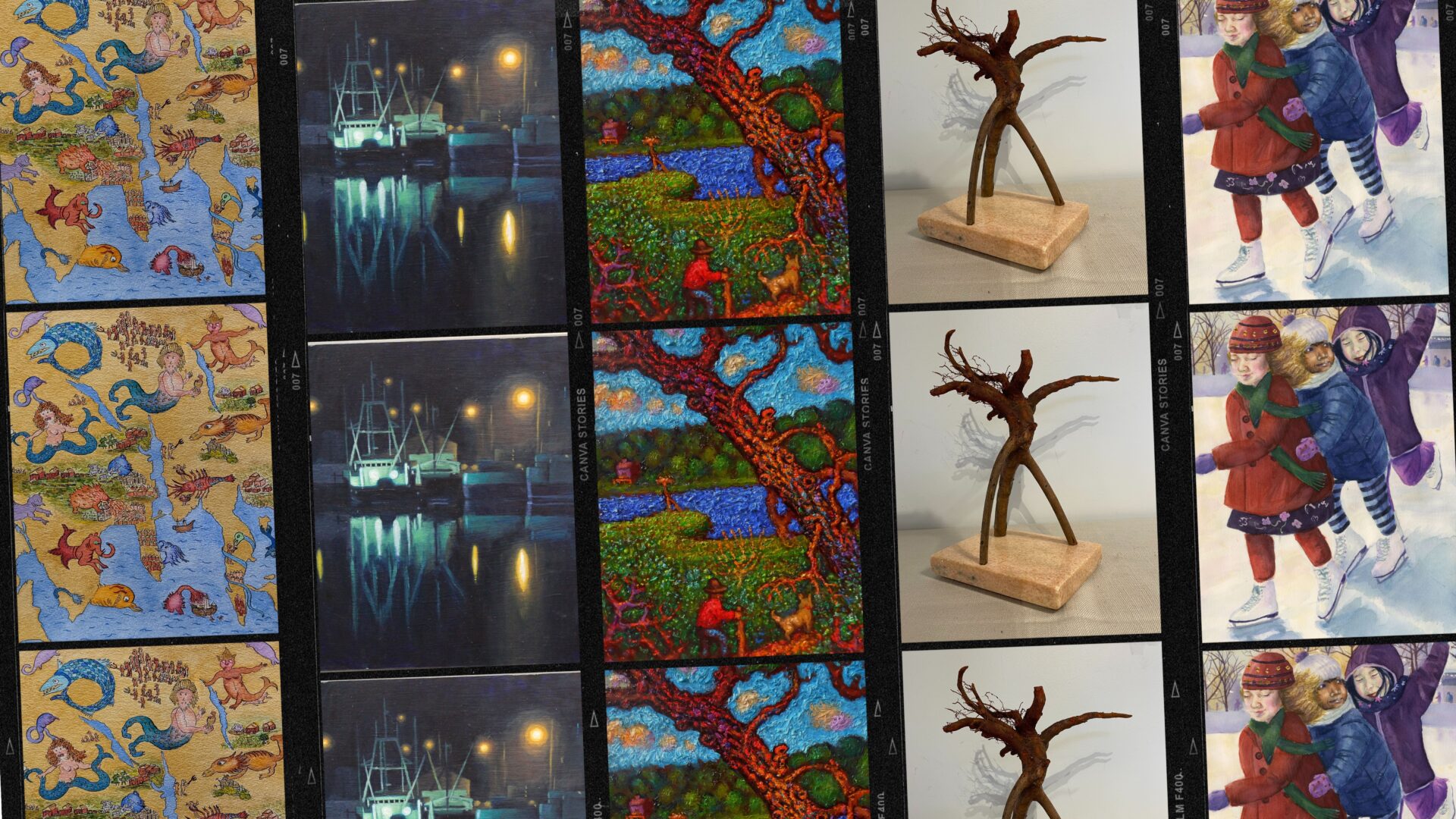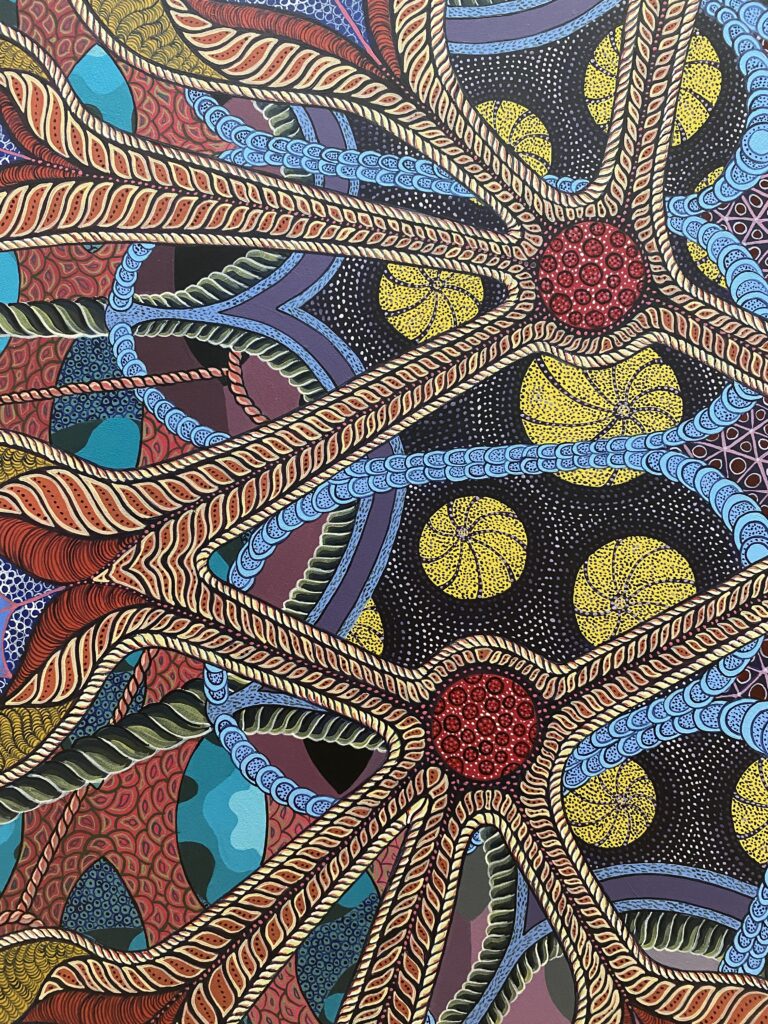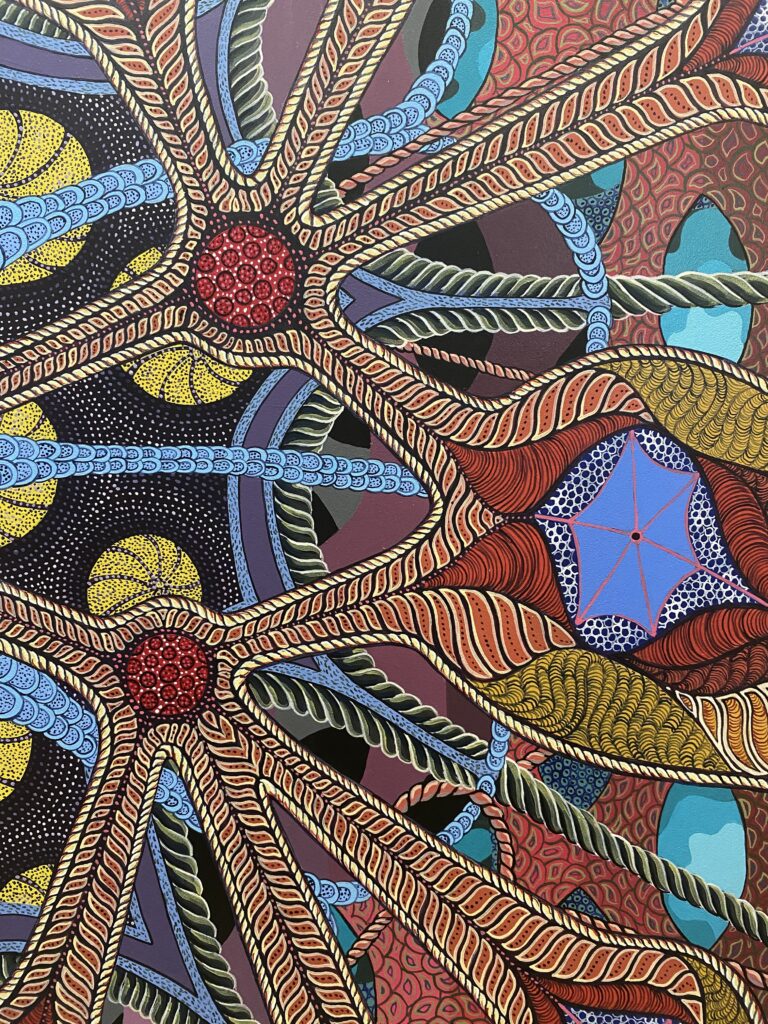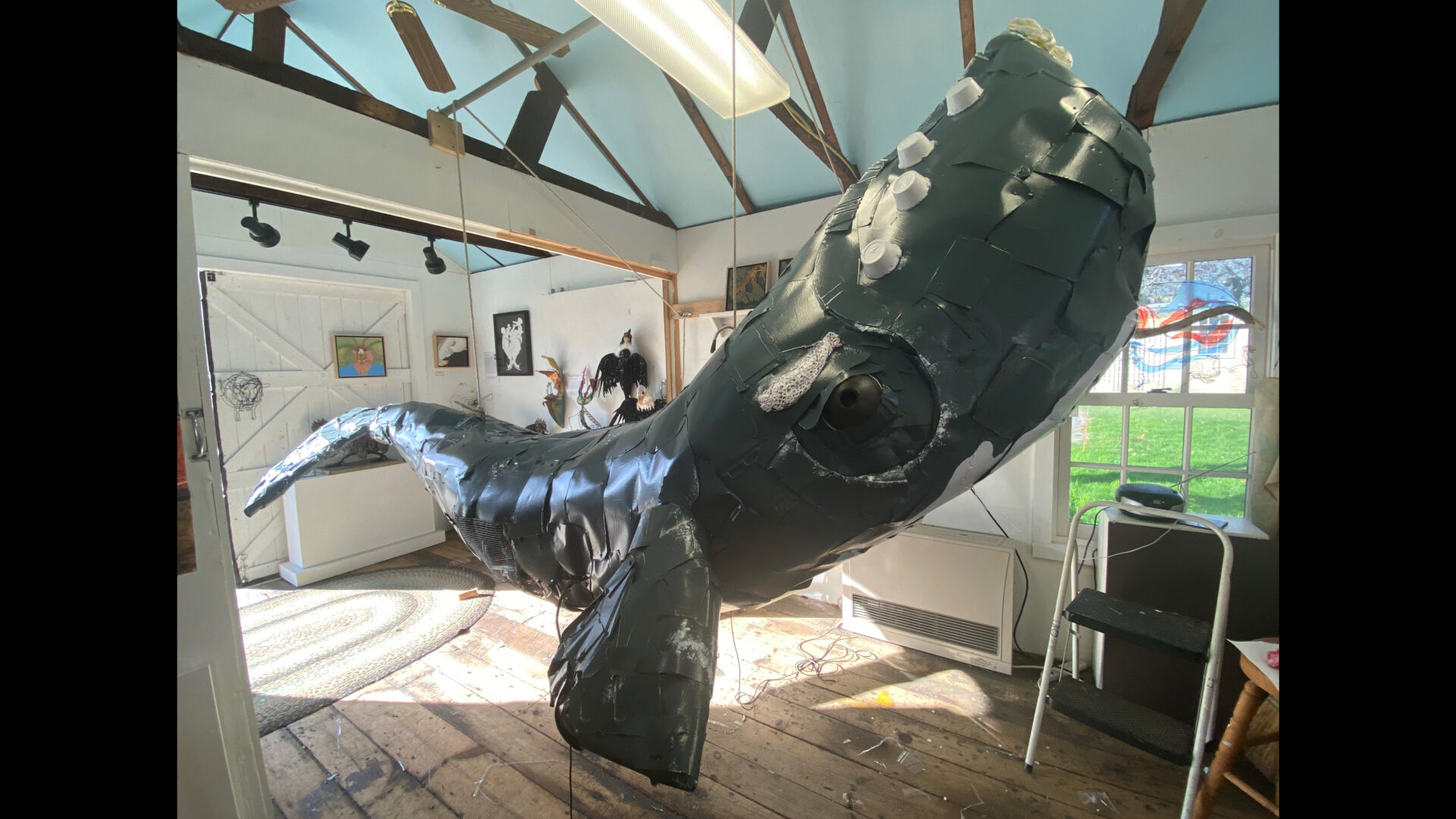Framing the Domestic Sea: photographs by Jeffery C. Becton
New Bedford Whaling Museum
Wattles Gallery
January 12, 2024 – May 5, 2024
Download our Bloomberg Connects app, hear from the artist.

![]()
Presented by:
Wednesday, January 24, 2024 | 4:30pm
Inundation District Film Screening
Join us for the screening of Inundation District, a film by David Abel and Ted Blanco.
Framing the Domestic Sea: photographs by Jeffery C. Becton presents a new body of work by this celebrated Maine artist. His digital photographic collages are surreal and panoramic in scope. The layered visual images evoke the past, New England’s varied histories, the maritime world, and contemporary environmental concerns.
Inspired by the intertidal spaces and atmospheric weather conditions surrounding his home on Deer Isle off the Maine Coast, Becton creates densely layered digital photographs that probe boundaries between dream and reality, interior and exterior, abstraction and representation. His montages frequently contain architectural elements and objects from surrounding antique New England homes; many are part of his personal history. They invite close looking and quiet contemplative study. Their subjects feel familiar and vernacular, but the scale of the prints and their uncanny qualities – they often present ruptures between what we see and what we expect – puncture the quietude and introduce a level of anxiety: about the passage of time, the work of history, and the indomitable forces of the natural world. In this way, Becton’s work engages with many of the pressing issues of today, including intergenerational legacies, the inadequacies of and absences within traditional histories, and the widespread impacts of climate change, especially rising sea levels and changing coastlines. As an Islander, Becton is ideally suited to raise such questions and imagine startling outcomes, if we don’t turn the tide and change course.
In his photographic dream worlds, Becton captures certain moods via visual effects – fog, rain, reflections – to create an in-between world. Domestic spaces merge with the sea; the landscape is encrusted with oceanic materials; places appear simultaneously both timeless – as if they were and always will be there – and under imminent threat of destruction. Scenes in Becton’s works feel eternal and, also, fleeting and ephemeral. This makes them deeply fascinating and mesmerizing in turn. There is a sense of the impending in most of Becton’s oeuvre, something reaching around the corner – just out of sight, but there -- watching. Intimacy pervades his visual lexicon, yet each work carries a vestige of the uncanny. What is real? How do we hold onto memory, legacies, time, youth, or history? In pieces where the sea reaches the threshold, or invades an interior, the frightening outcomes of rising sea levels and climate change are forcefully made visible. In other works, the crowns of ancient pine forests rise above a sea of mist, hinting at an Atlantis of New England, a place beyond the impact of humankind, a sort of Eden. The destruction of both mythic lands – Atlantis and Eden – lends a sense of foreboding that connects deeply with environmental narratives and maritime concerns. How do we hold on? To a landscape, a history, a culture – in the face of changing cultural values and catastrophic environmental change?
About the Artist: A pioneer in fine-art photography, Becton (b. 1947) received an MFA from the Yale School of Art in 1976. He worked on the mainframe computer at Yale’s computer science lab—an experience that primed Becton to welcome the new digital tools in the mid-1980s. By the early 1990s, Becton was experimenting with the layering of visual information, living year-round in Maine, and creating surreal scenarios evocative of that in-between milieu one inhabits when living by the sea. Becton’s work has been in numerous solo, group, and juried exhibitions, and highlighted in national and international publications, including the Royal Academy 2022 Summer Exhibition in London. In 2015, Marshall Wilkes (Ellsworth) published a monograph on Becton’s work, and in 2016, the Bates College Museum of Art held a solo exhibition of Becton’s large-scale monographs that traveled to Tennessee, Florida, and Virginia. Becton’s work is in the museum collections of Bates College Museum of Art, Farnsworth Museum of Art, and Portland Museum of Art. Becton lives in Deer Isle, Maine, where he maintains a studio.
This major exhibition is made possible by our presenting sponsor, Vineyard Wind, with additional support from Charles Altschul, Henry Becton, Boston Marine Society, Tricia & Chris Schade, and an anonymous donor.
All Hands
New Bedford Whaling Museum
Big & Little Braitmayer Gallery
September 1, 2023 – September 8, 2024
The New Bedford Whaling Museum Curator of Maritime History, Michael P. Dyer, explores the deep cultural connections between American whaling and the U.S. Navy in the 19th century up to the First World War. With a quarter-century of experience studying, collecting, writing, and exhibiting American whaling and maritime history, Michael brings a mature perspective to this hitherto unexamined subject. Starting in the late 1980s with the U.S. Naval collections at the Kittery Historical and Naval Museum in Kittery, Maine, and working at Mystic Seaport Museum, the Kendall Whaling Museum, and the Australian National Maritime Museum, he has grown into this subject at every professional level.
The exhibit features diverse objects such as whalemen’s scrimshaw of naval battles, marine paintings and prints, and personal biographies and objects of sailors who served in both branches. It also features U.S. Naval Hydrographic Office sea charts to which whalers contributed, Federal documents supporting the United States Exploring Expedition, and the facts surrounding numerous naval protection and police operations in seas around the world in support of whalers.
Objects from other institutional collections are included, such as cultural artifacts from Oceania collected by Lieutenant John Collings Long, stationed on the USS United States in Callao, Peru, in 1825 at the time the U.S. schooner Dolphin was dispatched to arrest the mutineers of the whaleship Globe of Nantucket. These objects are held at the Portsmouth Atheneaum and are exhibited on loan. Other subjects include Herman Melville’s time spent in both services in the 1840s, and the adventures of Captain David Porter defending American whalers in the Pacific during the War of 1812. American whalers also serve with distinction in the Navy during the Civil War, and many objects reflect their service and experiences.
This exhibition and publication were made possible by support from:
Boston Marine Society
Rodney H. Brown
Marilyn & David Ferkinhoff
Furthermore: A Program of the J.M. Kaplan Fund
Alan & Janice Granby
Alison Hedges & Robert Saunders
Captain & Mrs. Robert G. Walker
Local Artist Showcase
First Floor
Banner Image: (L-R) Works by artists Susan Mendyn, Roy Rossow, Milton Brighton, David Formanek, Hannah Robidoux
The New Bedford Whaling Museum proudly celebrates and showcases some of the talented artists of the region. The exhibition rotates regularly and is located on the first floor of the Museum. This is an area that is accessible for free, no admission required.
The New Bedford Whaling Museum supports Local Artists by exhibiting work in a large wall vitrine in Jacobs Family Gallery, a prominent location that is highly visible and free for visitors. The Museum promotes these exhibitions on its website and through our social media.
Now Accepting Local Artist Submissions
The New Bedford Whaling Museum now invites local artists to apply to have their work featured in our Local Artists Case!
We accept submissions on a rolling basis for three exhibition time frames:
- January-April
- May-August
- September-December
Please refer to the FAQ below for more information and application requirements.
On View Now
Nancy Hayes is an artist who has brought her own personal vision to many mediums including terra-cotta clay, acrylic paint, and watercolor. No matter the medium a consistent theme emerges. That theme speaks to how her brain organizes space, pattern, color, and form. Although considered abstract, both her sculptures and paintings seem to depict aspects of worlds yet unseen. Rather than an expression of frenzy they depict highly organized ecosystems where each part is dependent on the whole. The unity and interdependencies speak to the building blocks of matter as well as a spiritual presence that leaves us wondering.
Hayes has received many awards and grants both as a ceramic sculptor and a painter including a Massachusetts Cultural Council grant in the crafts category, a New Bedford Cultural Council Grant, and a Society of Arts and Crafts Artist Award. Her work is included in the collections of the DeCordova Sculpture Park and Museum, the Danforth Museum, Dublin School, and the New Bedford Libraries as well as many private collections. Raised outside Philadelphia, Hayes currently resides in the South Coast of Massachusetts.
nancychayes.com
instagram @ nancy_hayes_art
Frequently Asked Questions
Artist requirements
Apply Now
Local Artist Showcase 2024
Local Artist Showcase 2024
ART ON THE PLAZA: Marnie Sinclair
New Bedford Whaling Museum
Opening: June 6, 2023
“Single-use plastics” (SUPs) represent 50% of all plastic produced, are used once and thrown away. The impact of plastic waste on the environment and human health are drastic. Every year, over ten million tons of plastic enter the oceans. Plastics then breakdown into microplastics and are consumed by humans and wildlife. It’s been estimated plastic pollution kills 100,000 marine mammals – like Seamore the Seal - annually.
Kin was inspired by an unborn North Atlantic right whale calf that died with its mother from a ship strike off the coast of Virginia in 2005. Their skeletons hang inside the New Bedford Whaling Museum. The North Atlantic right whale is critically endangered. Today, there are about 335, and under 70 breeding females. Kin offers an opportunity for reflection about the human impact on marine mammals. By referencing familial bonds and generational loss, this emotional work inspires compassion toward these threatened creatures.
Marnie Sinclair (b. 1945) is a process artist and environmental activist who often uses her art to visually express the many complicated issues that surround climate change and ocean pollution. Sinclair was raised in the tropics, then lived and worked on Martha’s Vineyard, and now resides in Damariscotta on the Southern coast of Maine. In each location, she finds inspiration in the shorelines and native wildlife. Kin and Seamore the Seal are inspired by her deep concern over sustainability and marine mammal health. For their sake and our own, Sinclair exhorts audiences to aim for a more sustainable existence. As she notes, “All living beings deserve it!”
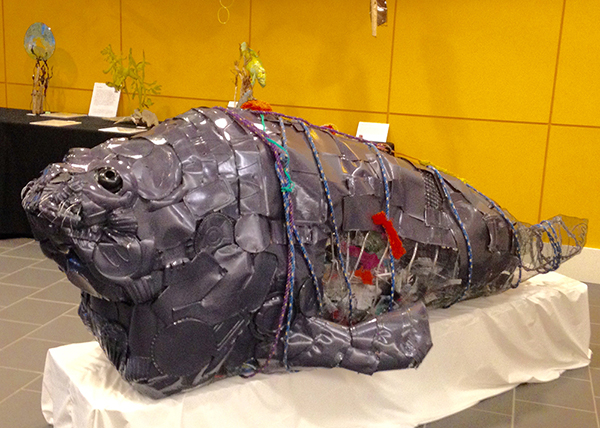
Marnie Sinclair (b. 1945), Seamore the Seal, 2019. Made of recycled single-use plastic, wire, and heavy-duty hardware cloth, 96 x 38 inches, collection of the artist.
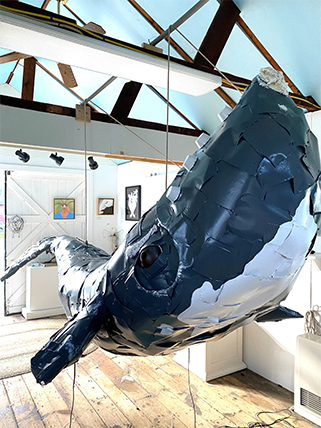
Marnie Sinclair (b. 1945), Kin, 2023. Made of recycled single-use plastic, wire, and heavy-duty hardware cloth, 108 inches long, collection of the artist.
